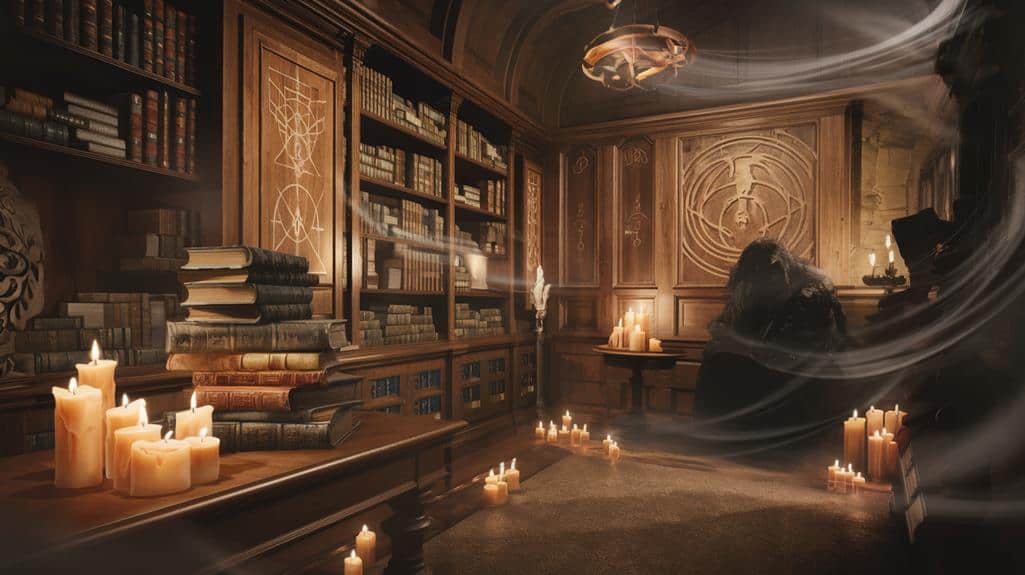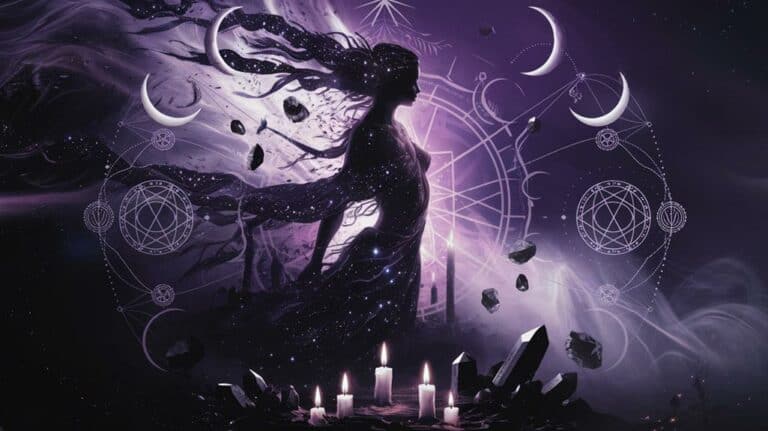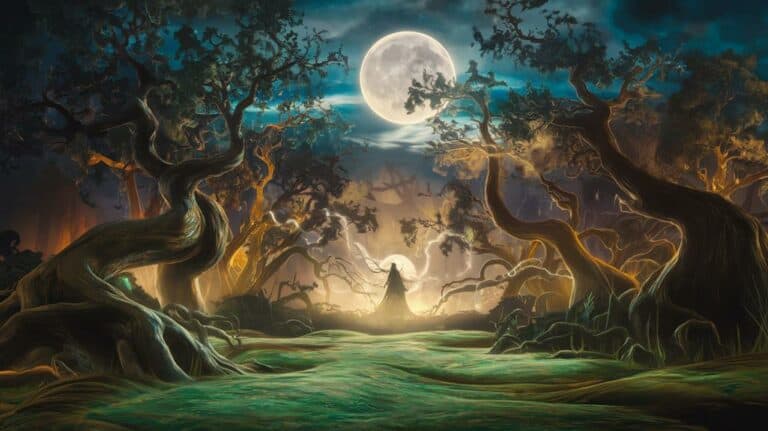Mysticism in English Literature
As you explore the domain of mysticism in English literature, you’re about to uncover a profound connection between the divine and human experience. Works by early writers like Richard Rolle and Julian of Norwich weave together emotional spirituality and Christian theology, using rich symbolism and nature to convey deeper truths. Their writings set the stage for Romantic poets like Blake and Wordsworth, who emphasized subjective experience and the supernatural. But what happens when the ordinary becomes a gateway to the extraordinary? You’re on the cusp of a journey that invites you to seek unity with the divine, but first, you must understand the roots of this mystical tradition.
Early English Mystical Writers

Delving into the domain of early English mystical literature, you encounter a rich tapestry of spiritual explorations and reflections that deeply influenced the religious and literary landscapes of their time. Among these early writers, figures like Richard Rolle, Julian of Norwich, and Margery Kempe emerge as pioneers of mystical thought, each contributing unique perspectives that shaped the spiritual discourse of their era.
Richard Rolle, often regarded as the “father of English mysticism,” penned works that emphasized the emotional aspects of spiritual experiences, including the concepts of warmth, sweetness, and melodiousness.
Julian of Norwich, through her *Revelations of Divine Love*, shared profound visions and understandings of God’s nature, blending vivid descriptions with theological insights.
Margery Kempe, the author of the first English autobiography, *The Book of Margery Kempe*, initiated extensive pilgrimages and chronicled her intimate conversations with God. Her writings, marked by candor and depth, offer a window into the turbulent and mundane aspects of medieval life, as well as her extraordinary spiritual encounters.
These early English mystical writers not only expanded the spiritual horizons of their contemporaries but also left indelible marks on the literary landscape, fostering a legacy that continues to inspire introspection and spiritual exploration.
Romanticism and Mystical Thought
The mystical writings of early English authors like Richard Rolle, Julian of Norwich, and Margery Kempe laid the groundwork for the interplay between mysticism and literary movement in later centuries.
As you explore the world of Romanticism, you’ll find that this era deeply intertwined mysticism with artistic expression, elevating the subjective experience and the emotional over the rational.
Romantic poets such as William Blake, Samuel Taylor Coleridge, and William Wordsworth envisioned nature as a divine, living force, imbuing it with symbolic meaning that resonated deeply with human subjectivity.
For them, imagination was a gateway to transcendent truth and spiritual understanding. This perspective on nature and the role of imagination in revealing its secrets marked a radical departure from the Enlightenment’s emphasis on reason and logic.
In this context, the personal, intuitive, and emotional dimensions of human experience became central to artistic expression.
The Romantics sought to integrate the fragmented aspects of reality through the unifying power of imagination, often engaging with themes of the supernatural and the mysterious.
This deeply introspective and imaginative approach to literature opened new avenues for exploring the mystical and the divine in human life.
The Spiritual Realm in Poetry
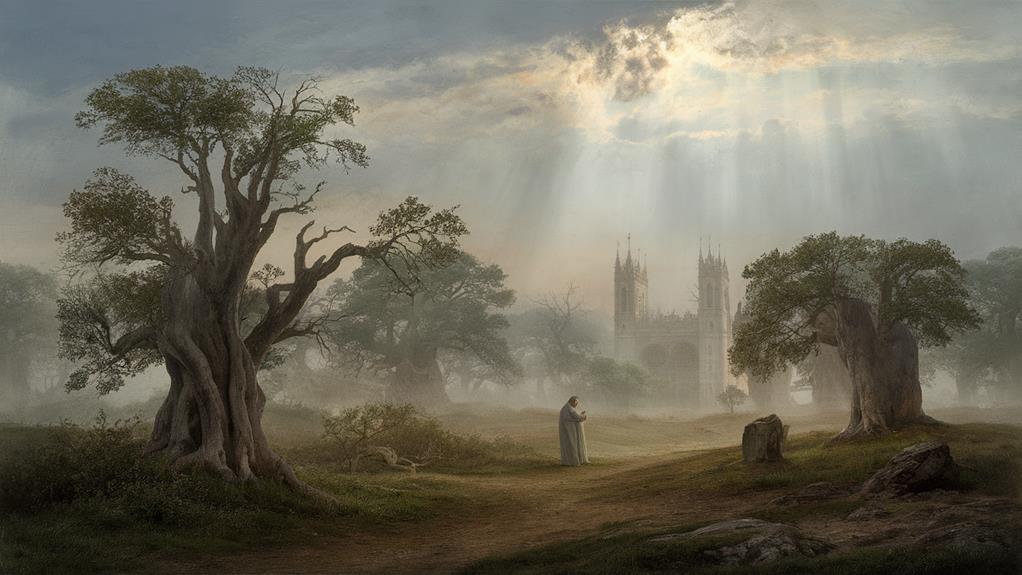
As you step into the territory of poetry that explores the spiritual, you encounter a world where the human soul seeks to connect with something greater than itself. Poets like Wordsworth and Blake explore the mystical, using nature and symbolism to convey the depths of the human experience. Their words weave a tapestry of the spiritual dimension, inviting you to immerse yourself in the profound and the unknown.
In this dimension, the ordinary becomes extraordinary, and the mundane transcends its limits. The poetic visions of Tennyson and Coleridge, among others, illustrate how the mystical experience can be both deeply personal and universally relatable. The symbolic landscapes they create not only reflect the inner workings of the soul but also indicate the possibility of a harmonious unity underlying all existence.
The spiritual poems of English literature challenge you to see beyond the physical, to perceive the world with an eye made quiet by the power of harmony and joy. In doing so, they offer a glimpse into the life of things, a life that pulsates with a deeper, more profound meaning.
This journey into the spiritual dimension isn’t about escaping reality but about embracing it in its fullest, most mystical sense.
Mysticism and Literary Symbolism
Symbolism stands at the heart of mysticism in English literature, weaving the threads of the ordinary and the mystical to convey profound truths. As you explore the works of mystic writers, you’ll find that symbols are used to bridge the gap between the tangible and the intangible. They’re vessels that carry the essence of the divine into the domain of human understanding, inviting you to see beyond the surface of things.
In mystic texts, nature often becomes a boundless reservoir of symbolic meaning. Falling leaves symbolize human mortality, while the harvest and the sower speak to the cycles of spiritual growth. The use of such symbols isn’t merely decorative; it’s foundational to the mystic’s endeavor to express the ineffable.
You’ll find that these symbols aren’t static; they evolve and deepen in meaning as you engage with them, reflecting the dynamic nature of the mystical journey. Through these symbols, mystic writers guide you toward a deeper understanding of the interconnectedness of all things, a truth that lies at the very heart of mysticism.
This realization transforms your perception of the world, revealing it as a tapestry of profound meaning.
Influence of Christianity on Mysticism
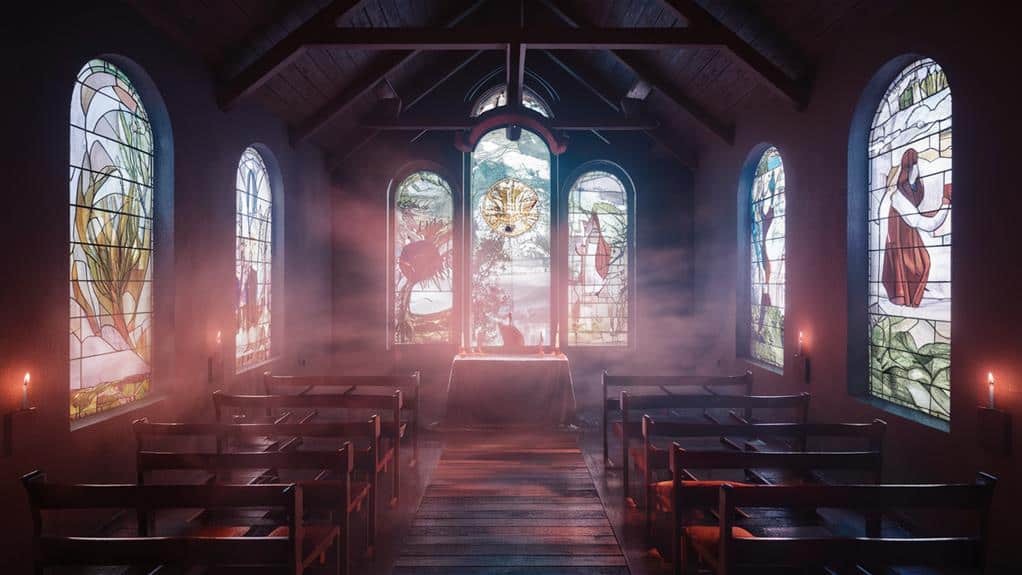
Christianity’s profound impact on mysticism is evident in the works of English mystic writers, particularly in their use of divine symbolism and allegorical narratives. As you investigate these literary masterpieces, you’ll notice how Christianity’s central themes of love, redemption, and spiritual transformation are woven throughout the texts.
The influence of Christian mysticism isn’t merely a surface-level ornamentation but rather a deeply embedded philosophical and theological framework that shapes the writers’ understanding of the divine and human experience.
In the writings of Julian of Norwich, for instance, you’ll find a rich tapestry of mystical experiences and visions that are deeply rooted in Christian theology. Her works, like those of other English mystics, invite readers to participate in a contemplative journey that seeks to bridge the gap between the human and the divine.
This journey is marked by a desire for union with God, a longing that’s at the heart of Christian mysticism. As you explore these texts, you’ll discover how Christianity’s influence on mysticism has created a unique literary tradition that continues to inspire and guide seekers of spiritual truth.
Mystical Paths in English Literature
These mystical paths are woven with symbols and imagery that mirror the spiritual quest for unity and divine love.
The natural world, in all its grandeur and subtlety, becomes a metaphor for the divine, guiding you through the labyrinth of human consciousness.
You see in Blake’s “Auguries of Innocence” the universe condensed into a grain of sand, and in Wordsworth’s “Ode on the Intimations of Immortality,” the soul’s journey from and to the divine.
The mystic’s gaze, freed from the confines of the mundane, reveals a world where everything is interconnected, a tapestry of the divine.
As you walk these paths, you’re invited to embrace the mystery, to find the transcendent within the tangible.
The Divine and Human Connection
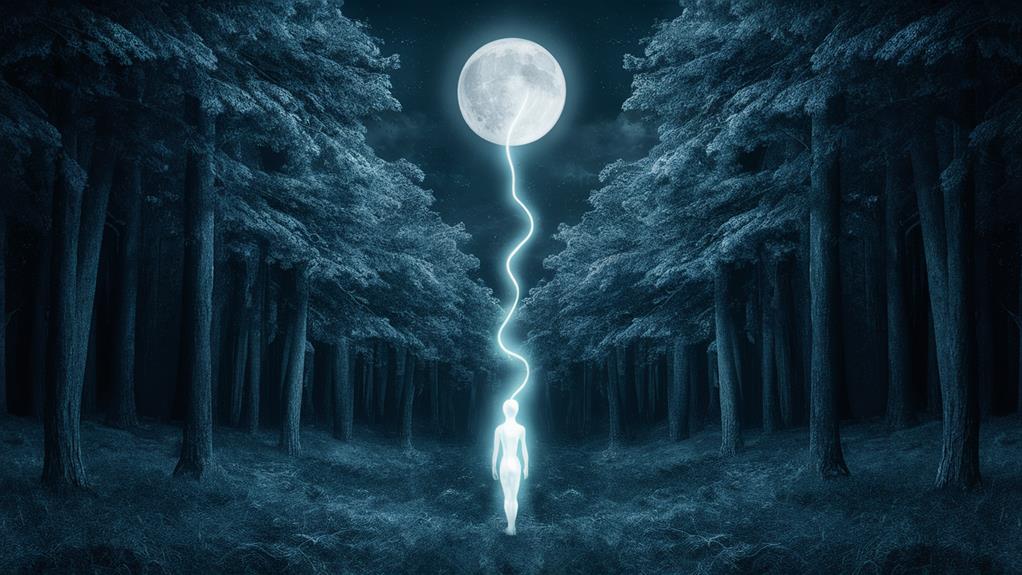
The mystical paths laid out in English literature inevitably lead you to the threshold of the most profound connection – the divine and human connection. As you explore deeper, you find that mystical writers from across the centuries, such as St. John, St. Paul, and St. Augustine, have sought to articulate this intimate bond with the divine. Their works, rich in symbolism and metaphor, invite you to reflect on the nature of this connection, where the human and divine intersect.
In this domain, the language of the mystics, like the poetic expressions of Wordsworth and Blake, speaks directly to the soul, evoking a sense of awe and the sublime. Symbolism becomes a powerful tool, bridging the earthly and spiritual domains. The symbols of natural phenomena, such as the harvest, water, and fire, point to deeper truths, revealing the interconnectedness of all things.
As you ponder these mystical texts, you’re drawn into a contemplative space where the boundaries between self and divine are blurred, and the unity underlying all existence is revealed. This profound connection isn’t just an intellectual concept but a lived experience, calling you to embrace a deeper, more expansive view of reality.
Transcendentalism in English Literature
How deeply intertwined are the roots of transcendentalism and mysticism in English literature? As you explore this rich landscape, you’ll discover that the boundaries between the two are blurred, reflecting a shared quest for spiritual truth and the essence of human existence.
Transcendentalism, though originally an American movement, resonates in English literature as a profound exploration of the divine and human connection.
Transcendentalist writers emphasize intuition and personal knowledge, urging individuals to transcend societal norms and uncover their inner selves. This journey often begins with solitude and immersion in nature, allowing the individual to experience unity with the universe.
Ralph Waldo Emerson and Henry David Thoreau, pioneers of this movement, left indelible marks on the literary landscape with works like “Self-Reliance” and “Walden,” which inspire readers to seek their own path and spiritual renewal.
In these texts, you’ll find invitations to embrace nonconformity, to embrace the divine within, and to embrace the inherent goodness of the human spirit.
Transcendentalism in English literature consequently serves as a bridge between the mystical and the mundane, encouraging you to pursue a deeper understanding of your place within the universe.
It challenges you to seek not only knowledge but also inner illumination.
The Inexpressible Divine Experience**

Exploring the areas of transcendentalism, you might find yourself drawn to the concept of the inexpressible divine experience, a profound encounter that shatters the limitations of verbal expression. This experience, often at the heart of mystical texts, is characterized by an overwhelming sense of unity and interconnectedness, transcending the boundaries of language and logical comprehension.
It’s as if the very essence of existence, in its most sublime and ethereal form, touches your soul, leaving you awestruck and speechless.
In English literature, this inexpressible divine experience is captured in the works of poets like William Wordsworth and William Blake, who sought to express the unfathomable through metaphor, symbolism, and the poetic imagination. Their writings aren’t just aesthetic expressions but profound meditations on the human-divine relationship, urging readers to plunge into the depths of their own consciousness.
As you explore these mystical dimensions, you may find yourself questioning the limits of human understanding and the nature of reality itself, starting on a journey that’s both deeply personal and universally relatable.
It’s a journey into the heart of the inexpressible, where words fail, yet the soul finds its deepest truth.
Conclusion
As you explore the world of mysticism in English literature, you’re invited to cross the threshold between the ordinary and the divine. This profound tradition, spanning from early mystics like Richard Rolle to Romantic poets such as Blake and Wordsworth, draws you into a domain where the supernatural and human experience intertwine. Reflecting on the symbolic and spiritual dimensions of these works, you’ll discover deeper truths and perhaps, in the quiet moments, a sense of unity with the divine. This journey, though inexpressible, touches the very essence of existence, leaving an indelible mark on the soul.



